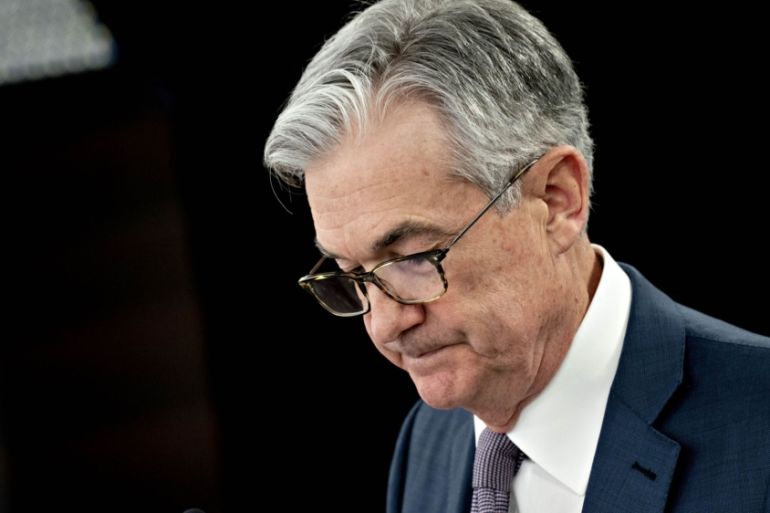Surprise! Fed slashes interest rates to counter coronavirus
US central bank cuts its benchmark rate by half a percentage point to buoy economy against coronavirus fallout.

The Federal Reserve cut its benchmark interest rate by half a percentage point on Tuesday in a surprise move aimed at shoring up the economy against negative fallout from the coronavirus outbreak.
In a statement, Fed policymakers noted that while the United States economy remains strong “the coronavirus poses evolving risks to economic activity”.
Keep reading
list of 3 itemsVirus plunging economy into worst downturn since 2009, OECD warns
Hold that sale: Global property deals slow as virus dents China
Tuesday’s move lowers the federal funds rate to a range between 1 percent to 1.25 percent, marking the deepest one-off cut since the 2008 financial crisis. It is also the first time since then that the Fed has slashed borrowing costs between regularly scheduled meetings. Policymakers are not set to meet until mid-March.
The Federal Open Market Committee voted unanimously for the emergency move and signalled its possible willingness to cut borrowing costs again, if warranted.
During a press conference following the rate cut, Fed Chairman Jerome Powell told reporters that the virus and measures being taken to contain it “will surely weigh on economic activity both here and abroad for some time”, noting emerging effects on the tourism and travel industries and concerns over global supply chains.
Powell added that “the magnitude and persistence of the overall effects on the economy, however, remain highly uncertain and the situation remains a fluid one”.
Paul Ashworth, chief US economist at Capital Economics, described the sudden rate cut as a “dramatic turnaround from last week, when even the most dovish of Fed officials didn’t appear to support any additional policy loosening”.
Global stock markets have been roiled by volatility as investors try to get to grips with how damaging coronavirus could be to economic growth.
US stocks moved higher on the heels of Tuesday’s rate cut, only to turn lower shortly after.
Last week, US stock prices took a beating not seen since the financial crisis as the widening outbreak stoked fears of growing recession risks. But share prices surged on Monday after central banks around the world said they were ready to unleash stimulus measures to offset the negative economic impacts of the outbreak.
On Tuesday, Australia’s central bank took the lead among developed markets after the country’s central bank cut its benchmark rate to a record low, citing challenges to growth from coronavirus.
US President Donald Trump seized upon Australia’s rate cut to prod the Fed to follow suit, tweeting that the Fed: “Should ease and cut rate big. Jerome Powell led Federal Reserve has called it wrong from day one. Sad!”.
When asked by reporters on Tuesday whether political pressure had influenced the Fed’s interest rate policy, Powell said: “We’re never going to consider any political considerations whatsoever.”
On Monday, the Organisation for Economic Cooperation and Development (OECD) warned coronavirus “presents the global economy with its greatest danger since the financial crisis”, adding that even in the “best-case scenario of limited outbreaks in countries outside China, a sharp slowdown in world growth is expected” in the first half of this year as supply chains and commodities are impacted, tourism drops and “confidence falters”.
The OECD sees global economic growth falling to 2.4 percent for the whole year, but cautioned that “broader contagion across the wider Asia-Pacific region and advanced economies” could bring global growth to as low as 1.5 percent this year – half of what it had forecast in November.